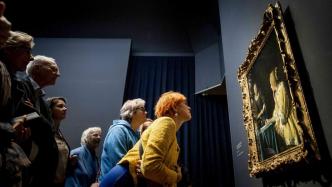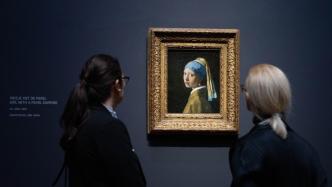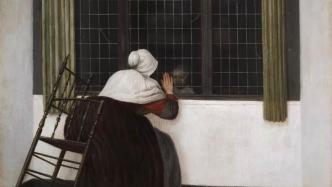
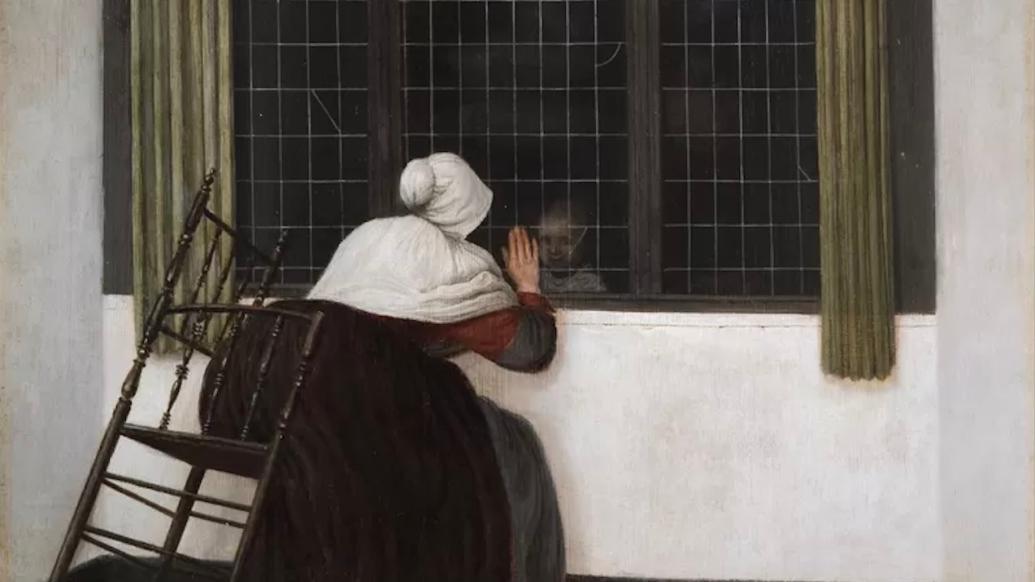
A woman in a fur-brimmed hat sits quietly reading in a plain white room, and a signature appears on a piece of crumpled paper on the floor—JV. Whose work is this? Johannes Vermeer? This is a wrong answer.
Compared with the high-profile "Vermeer" exhibition at the Rijksmuseum in Amsterdam, the same time as him, a painter named Jacobus Vrel (active in about 1640-1660) is also A good painter of quiet style, but his reputation is much less than Vermeer. The Mauritshuis Museum in The Hague, which houses "Girl with a Pearl Earring", is currently hosting "Frère, Pioneer of Vermeer's Style" to explore the story of this mysterious painter in depth.
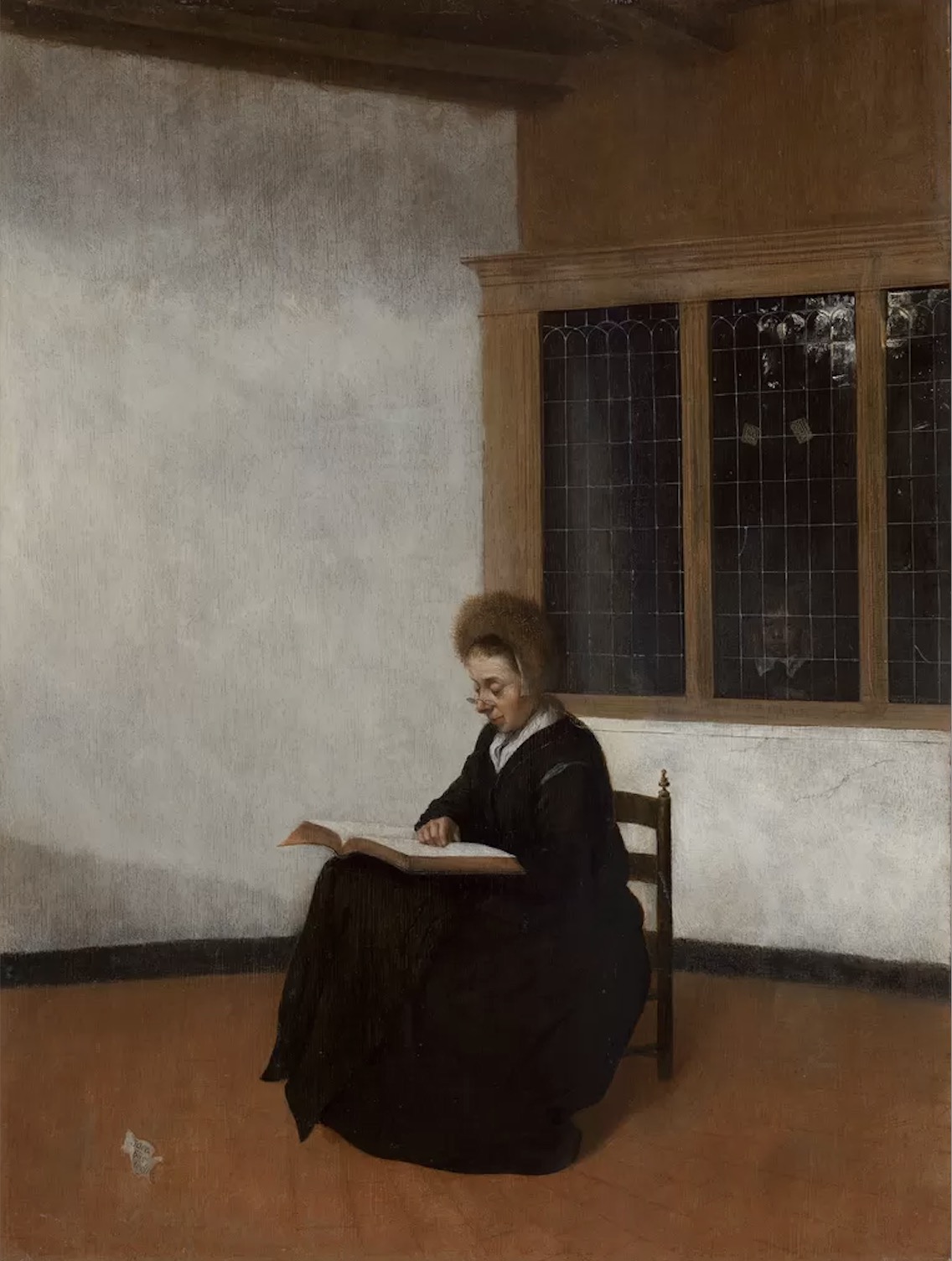
Freire, The Old Lady Reading and the Boy Behind the Window, after about 1655
The works of Johannes Vermeer and Jacobs Freher portray similar themes, down to the same initials: JV. In fact, Vermeer may have been inspired by some of Frere's paintings. In the history of art, someone even changed Frere's signature to Vermeer.
There are two works in the exhibition that were sold under Vermeer's name in 1888. One of them is "Street View with a Bakery near the City Wall" in the Hamburg Kunsthalle, and the other is "The Old Lady Reading and the Boy Behind the Window" in a private collection.
Like Vermeer, little personal information survives about the enigmatic painter. In order to study his life, a number of museums (Alte Klebstadt and Bavarian State Gallery in Munich; Fondation Castellane and Fortesluche in Paris; Mauritshuis Royal Museum) collaborated. An international project commissioning a dendrochronological analysis (the study of tree rings) of several of Frere's paintings. The findings suggest that Freire began painting before 1654, before Vermeer in Delft and Peter de Hooch (1629–1684).
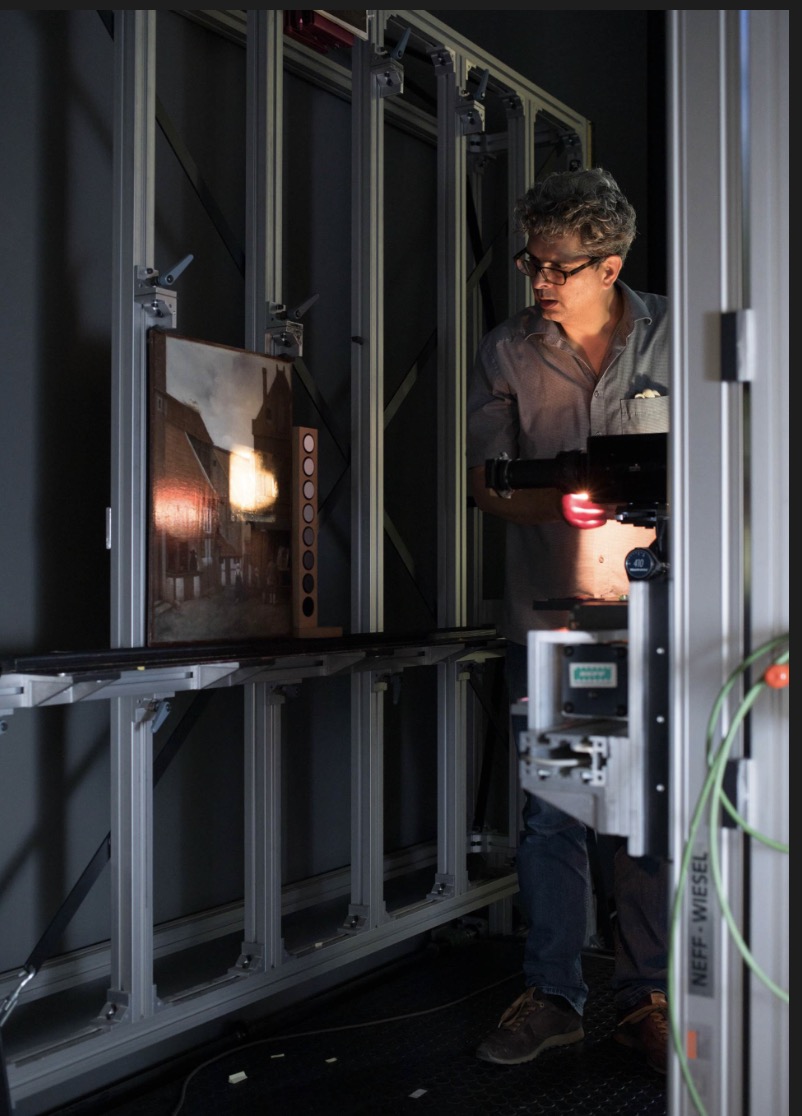
International Studies for Freer.
Yet, apart from a small group of specialists in 17th-century Dutch art, little is known about Frere. He is one of the puzzling figures in Western painting. As summarized in the book "Frell: Finding Clues to the Mysterious Artist," "Frere was like a ghost."
“Even when you read speculative fiction, you always end up knowing who did it,” said co-author Quentin Buvelot, a senior curator at the Mauritshuis in The Hague. For the past four years, he has been involved in an international research project to unearth this enigmatic artist while preparing for the Freire exhibition. "But we still don't know anything. Every time it seemed like he was about to touch Freire, he would 'slip away.'"
So, aside from a few memorable pieces, who is Frere? It is still a mystery.

exhibition entrance
The enigmatic Frere, created before Vermeer
Currently, around 50 paintings are attributed to Frere. Despite the best efforts of the researchers, the only surviving known sources in which Freire's name exists is in the inventory of the art collection of Leopold Wilhelm, Grand Duke of Brussels (1614-1662). This list shows that Frere was once a coveted artist, otherwise why would someone of such stature collect his work? But the documents provide no other information about Freire, including where he lives. Although some scholars have tried to find clues through the street scenes in the paintings, but to no avail, because the houses and alleys in the works have no obvious local signs.
Because Frere has no other biographical information, many studies of him are based on the signature on his works, which is also a signature feature of his works. About two-thirds of Frere bears signatures on a white background, which he may consider to be his "trademark." Research shows that he has used several versions of the class name, including JV, J Vrel, Jacobus Vreelle, and Jaco/büs/frell.
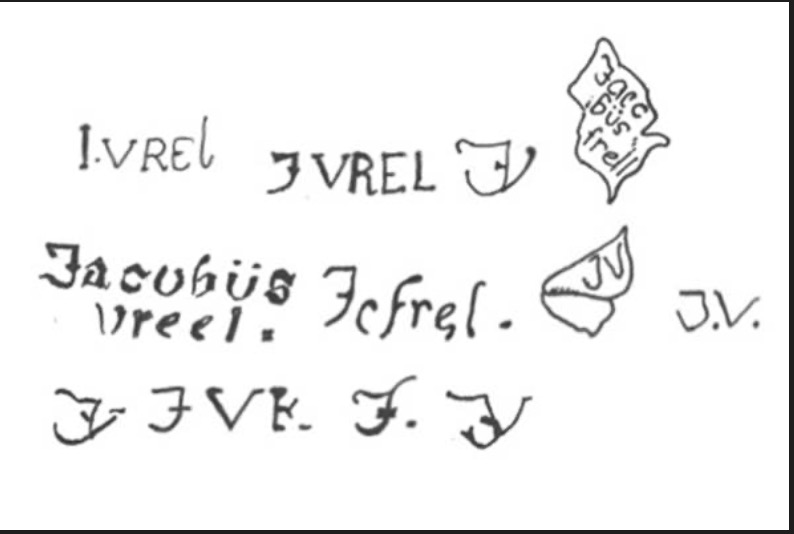
Frere's various signatures
Bouviero believed that Freire was Dutch and even suggested that he lived in Zwolle, the provincial capital in the north-east. However, other scholars speculate from the German spelling of his name that he may have lived in the German border area at some time, and his works catered to the German market. So maybe he was from the lower Rhine region, not Dutch.
Most of Frere's works can be divided into two categories, one is stage set-like street scenes, recording the daily life of the small town, and the other is interior scenes, mostly empty rooms and high ceilings. Maybe Freire likes to collect, the still lifes and interiors in his works are like his own inventory, seven plates, three chairs, two candlesticks...
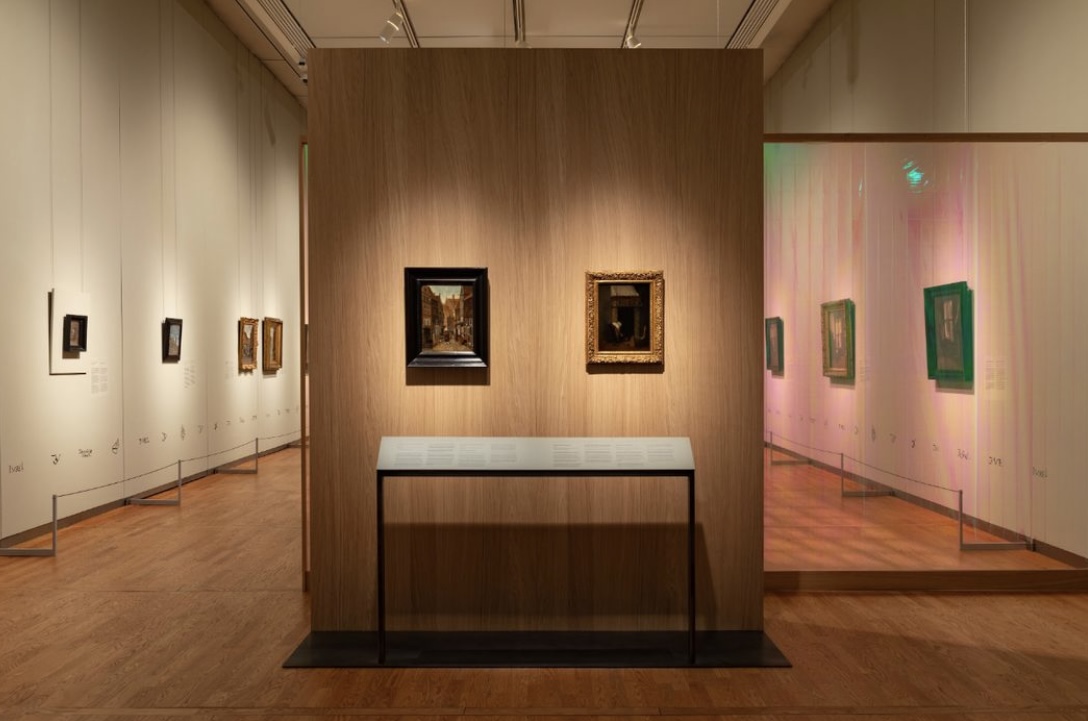
exhibition site
Recent research evidence suggests that Freire began his career in the 1630s, when Vermeer and Pieter de Hooch were born, and that Freire was in a sense a precursor to them.
Timeliness is important here, and it explains why Frere's work doesn't hold so much appeal for us today. His problem was the same as that of many pioneers - being surpassed by those who came after. Not only Vermeer, but also Peter de Hooch, Jan van der Heyden (1637-1712) and others who surpassed him. Those familiar with the style of the Dutch Golden Age may not feel that Frere is special. Especially in the depiction of urban landscapes, Vermeer's cities are as warm and beautiful as fantasy, but Freire seems to be not very good at using light. Even the blue sky seems to be approaching heavy rain.
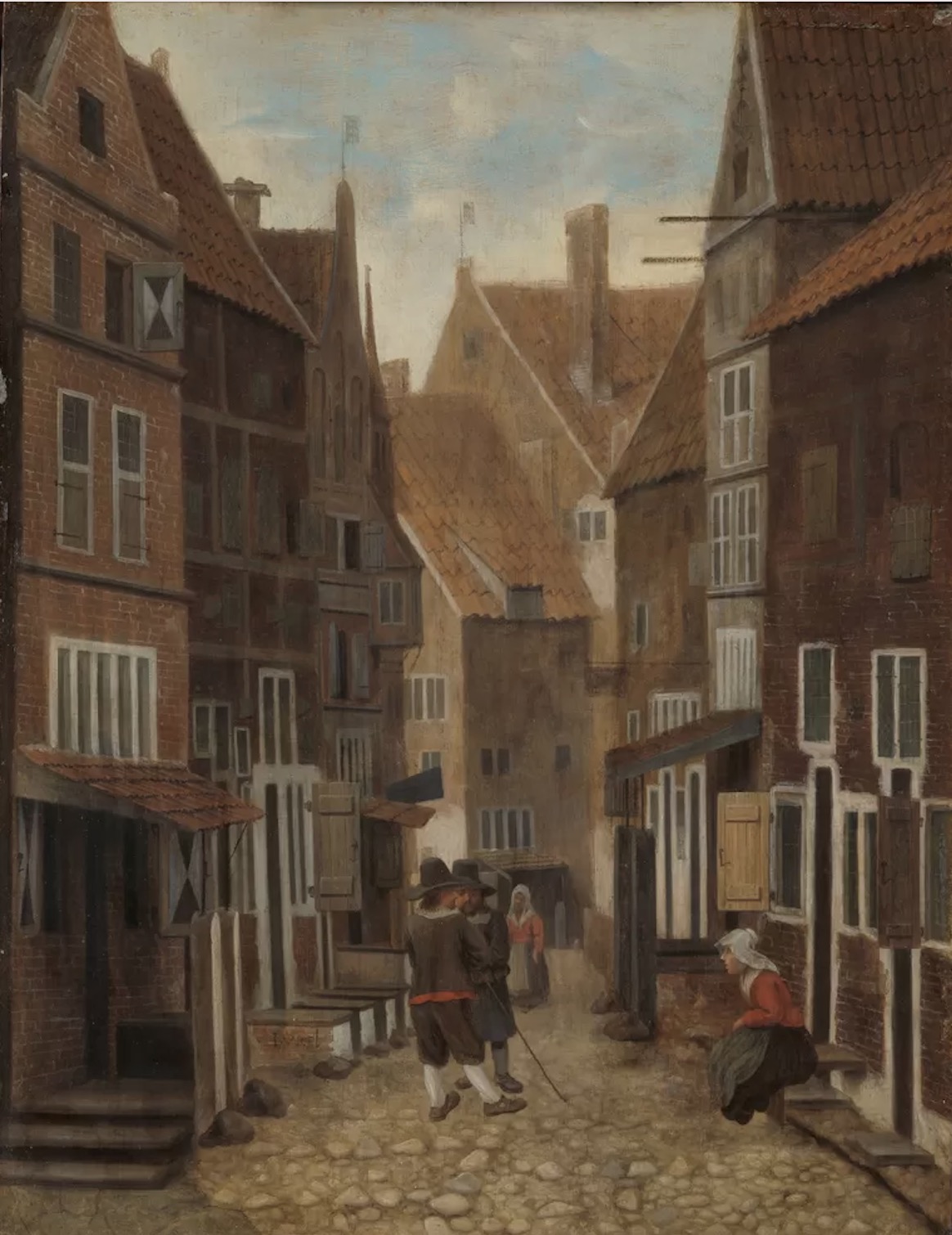
Freire, Alley with Seated Women, circa 1650
Fortunately, Frere quickly turned his attention to the interior, but it was still gray and dim. Unlike other 17th century Dutch genre painters, Freire's work contains highly personal impressions and observations, both real and mysterious. Most of the images show women from behind, their faces hidden—it's like a mystery.
One of the most influential, depicts a woman seated in a reclining chair, her hand against a window. On the other side of the glass, in the twilight, there is a child. Maybe it seems so modern that it's hard not to see it as a metaphor.

Freire, Woman Looking at a Child, at a Window, after about 1656
Is Frere a forerunner of Vermeer?
Interestingly, the Mauritshuis Museum in The Hague currently lends three works from its collection, including "Girl with a Pearl Earring" to the "Vermeer" exhibition, and has opened the Freire exhibition by itself. He is positioned as Vermeer's "pioneer".
So what does the enigmatic Frere have to do with Vermeer? Did Vermeer pave the way?

Vermeer's "Girl with a Pearl Earring" from the Mauritshuis Museum in The Hague is currently on display at the "Vermeer" exhibition in Amsterdam
For scholars of Dutch art, could Frere help resolve a conundrum surrounding the study of "Vermeer in Delft"—who did Vermeer learn from? This is also what puzzled the French art critic Théophile Thoré (1807-1869) who "rediscovered" Vermeer in the 19th century.
In fact, so far, scholars still do not know where Vermeer was taught. Could it be that Vermeer saw Freire's work during the critical period of his creation? Bouviero thinks the hypothesis is plausible, but there is no conclusive evidence.
Perhaps the subject matter of Freire's paintings, and their minimalist, contemplative mood, were so often reminiscent of Vermeer's work that for many years he was considered a follower of Vermeer. It is even thought that Freire's street scene was a response to Vermeer's The Little Street (c. 1658).
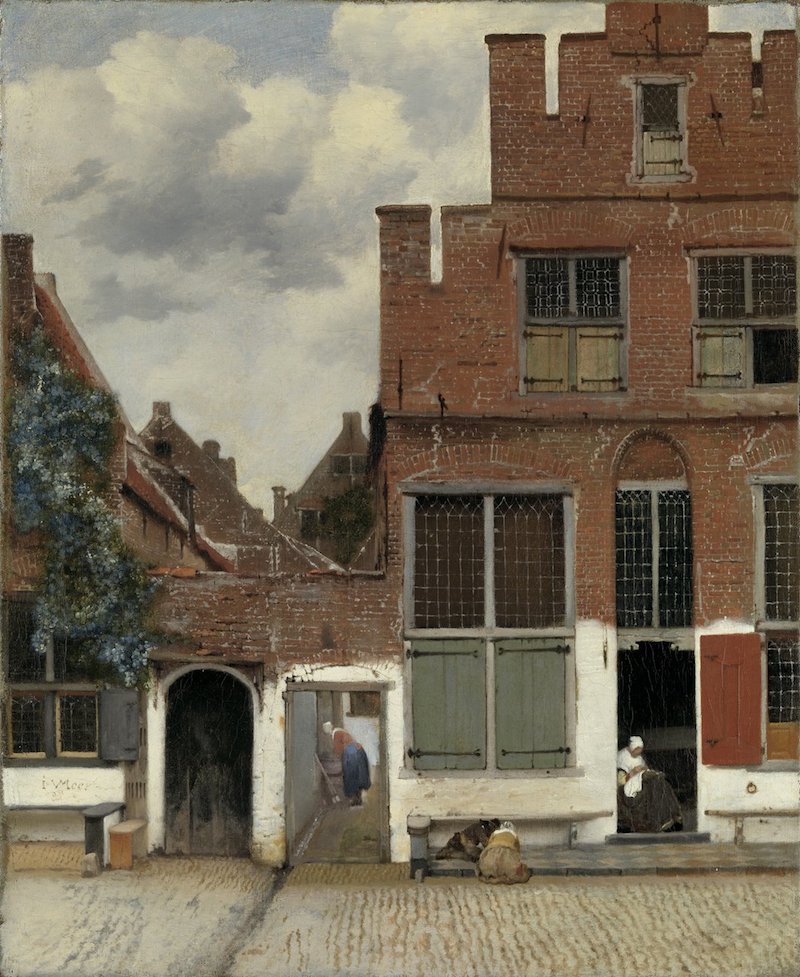
Vermeer, The Little Street (House in Delft), circa 1658
It is because of so many similarities between the two artists that Freire's work has been wrongly attributed to Vermeer. Even Torre in the 19th century mistook his Freires for Vermeers in his collection. When Torre's critique of Vermeer appeared in 1866 in the French Gazette des Beaux-Arts, its cover mistook Freire's work.
Ahead of the exhibition at the Mauritshuis in The Hague, researchers conducted dendrochronological analyzes (the study of tree rings) of the wood panels on which Frère painted. The results showed that Frère painted street scenes earlier than thought, in 1630 The 1990s was completed, while Vermeer was not born until 1632.

Freire, Woman Reading by the Fireside, undated
Furthermore, according to Bouviero, Frere's street scenes "are the first of their kind in Dutch art". So, Vermeer's "Small Street" follows Freire? "There is a real possibility," said Bouviero, "that if Frère did live in Zwolle, there was a more famous artist, Gerard ter Borch (1617-1681) , he was an acquaintance with Vermeer, and their signatures appear together on a document from 1653. Is it possible that Frère of Zwolle was acquainted with ter Böch, and is it possible that ter Böch put Frère's Innovation introduced to Vermeer?"
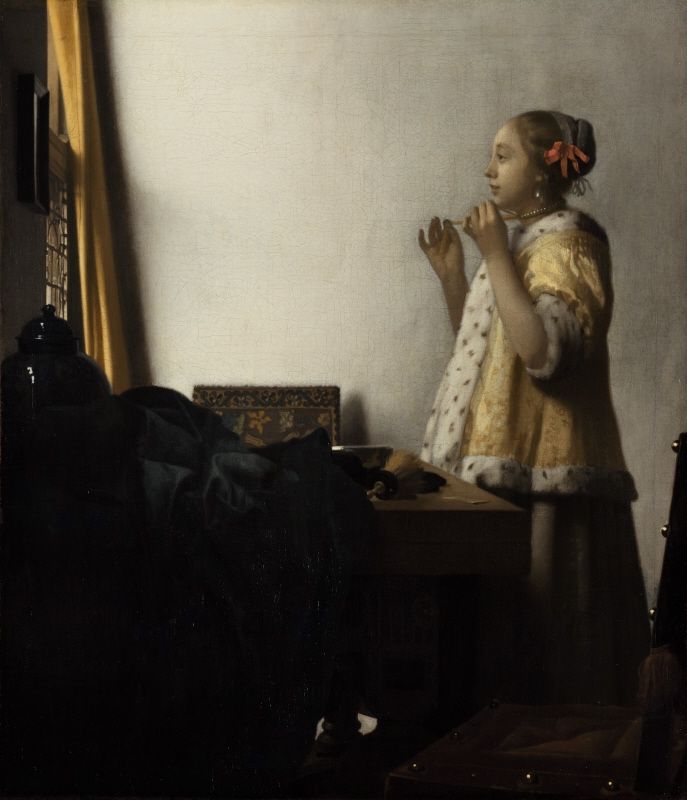
Vermeer, Woman with a Pearl Necklace, 1663-1665
There is an obvious counterargument to this view: Freire's paintings were all done on wood panels, whereas Vermeer preferred to use canvas. The minimalism and melancholy style of Frere's interiors appealed to modern tastes, but the shapes and proportions of his figures were awkward. Perhaps, that's why Freire paints the back so often, since faces are harder to sculpt.
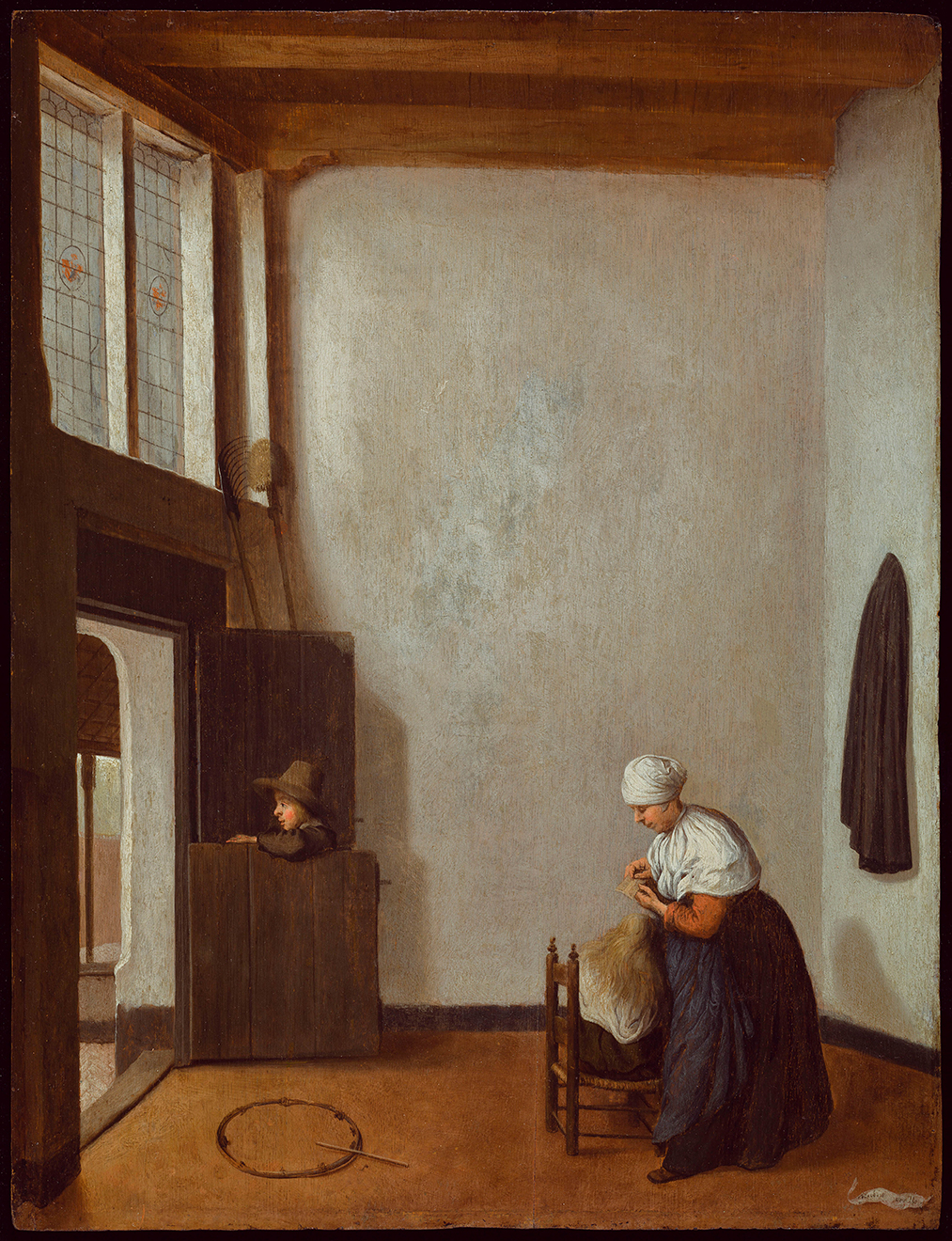
Frere works
So, according to Gregor J M Weber, co-curator of the exhibition at the Rijksmuseum in Amsterdam, Freire was just an "amateur" who saw no need to compare Vermeer's developments with Freire's. Rael's Art Connection. Instead, he stuck to the traditional view that Vermeer's style changed in the mid-1650s—from large, Italian-style biblical and mythological paintings, to smaller paintings of cityscapes and scenes of everyday life—because he was drawn to a completely Impressed by the successful innovations of a different artist, he was Peter de Hooch, who happened to be active in Delft at this time.
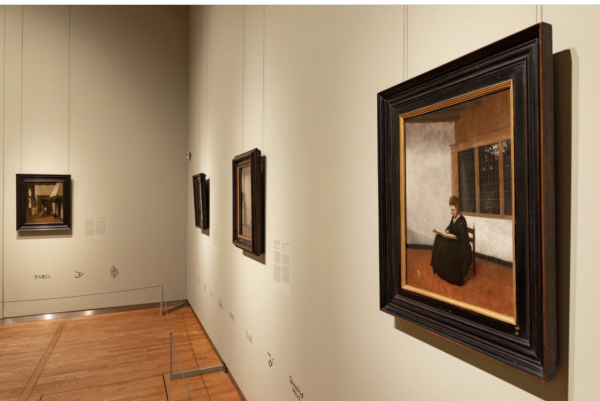
exhibition site
Bouviero, however, insisted that Freire's interior was "impressive" (and hoped that Weber would change his mind about Freire after researching the exhibition at the Mauritshuis in The Hague). Bouviero believed that Freire was a trained professional painter, "Why did he create so many similar works if not to sell them in the market?" Vermeer certainly might have been interested in Frere's work, and then It takes them, as Bouviero puts it, "to a whole different level."

exhibition site
But for now, finding solid evidence to support this theory is like looking for a needle in a haystack. Perhaps Frere is destined to remain a seductive specter that lingers on the fringes of art history.
Note: The exhibition will last until May 29. This article is compiled from the British Telegraph "Did Vermeer Learn Minimalist Style from Freire?" , De Volkskrant and the website of the Mauritshuis in The Hague.
